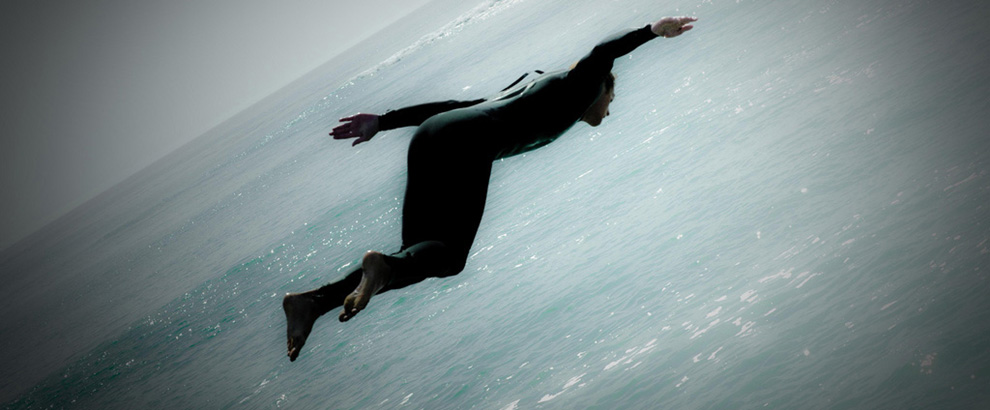
In these not-much-United States, we live, by any statistical measure one applies, in a new Gilded Age. Not since the age of the robber barons and the current president’s favorite predecessor, William McKinley, has the gap been so yawning between the upper and lower wealth strata of our society, not to mention the gap between the developed and undeveloped economies around the world.
The data are most everywhere one cares to look, a bare fraction of which we will touch on in this post. The common fact binding them together is that the rich keep getting richer at an accelerating pace.
According to the Federal Reserve, in the U.S. as of 2022, the bottom 50% of the population owned only 2.8% of the wealth. On the near-bottom rung in a country of 340 million that has long been the richest in the world, somewhere between 27 million-40 million people live below the official poverty line, which is $32,150 for a family of four as of 2025.
And on the absolute bottom rung, some 772,000 U.S. “residents” were homeless as of January, 2024.
Between 1978-2021, average CEO pay grew 1,460%. The average worker’s: 18%.
Farther afield, some staggering recent statistics among many, these from the world hunger organization, Oxfam:
Between 2020 and 2022, for every dollar of wealth the bottom 90% of the world population gained, billionaires gained $1.7 million. Leading to: billionaires now control more wealth than 50% of the world combined.
The problem is also rooted in the vast sums passed along from one set of uniquely privileged heirs to another over generations, and the small armies of lobbyists and tax-avoidance professionals whom Robeyns refers to as ‘the wealth defense industry’ of the developed world.
In 2024, the number of billionaires worldwide rose to 2,769, up from 2,565 in 2023. Their combined wealth surged from $13 trillion to $15 trillion in just 12 months—the second largest annual increase in billionaire wealth since records began. The wealth of the world’s 10 richest people—all men—grew on average by almost $100 million a day. If they were to lose 99 percent of their wealth overnight, they would remain billionaires.
The fact that all this is not an embarrassing scandal prompting huge infusions of human intelligence and money to alleviate such misery is a sad commentary on our times.
Into this mostly appalling situation steps the contemporary Dutch philosopher Ingrid Robeyns with her 2024 treatise, “Limitarianism: The Case Against Extreme Wealth.”
***
***
In a relatively spare 229 pages, Robeyns lays out a calm, carefully reasoned case for the near-certain devolution of human society at large if the current patterns of extreme wealth disparity persist into the future. In a rhetorical style wholly devoid of cant, she nevertheless lays the problem squarely at the feet of politics, policies, and cultural biases that have always favored the wealthy and uber-wealthy—and those who enable them.
The problem, Robeyns says, is multi-dimensional. Extreme wealth exacts moral, psychological, social, political and ecological costs, most of which wind up being borne lopsidedly by those of lesser means.
Neither, however, do the uber-wealthy wholly escape the snare of their own prosperity. Robeyns shares abundant research showing that while poor people lacking basic comfort and security do become happier with increased wealth, the same isn’t true for the already wealthy, whose money reaches a “saturation point” that does not confer more happiness on its bearer no matter how many more zeros get tacked onto their financial statements.
Rather, the wealth tends to become an end in itself in an endless competitive game, fueled largely by ego but often devoid of meaning or trusting relationships. In some cases, battles with addiction and true self-worth follow.
Radical wealth disparity keeps societies bifurcated, the have-nots scrounging and often squabbling among themselves for the relative crumbs dropped down to them from above, while the uber-wealthy buy the loyalty of select underlings and politicians via campaign contributions that help them retain their grip on power.
The problem is also rooted in the vast sums passed along from one set of uniquely privileged heirs to another over generations, and the small armies of lobbyists and tax-avoidance professionals whom Robeyns refers to as “the wealth defense industry” of the developed world. These wealth defenders often operate in the “twilight zone of legality,” spending their professional lives laser-focused on keeping their clients’ tax dollars from flowing into federal and state coffers.
Hence “limitarianism,” Robeyns’s term for a far-sighted, novel approach to help create sustainable economies, peace among and within nations, and a livable planet far into the future.
Meaning: a limit on wealth that ensures there is enough for all to live meaningful lives devoid of suffering strictly because of poverty.
***
***
What might that limit be? Robeyns isn’t certain, and there may not ever be any hard-and-fast maximum to apply in every case, since societies, currencies, political realities, skill sets and ambitions differ so much around the globe.
But in order to help us at least get a sense of where she’s going with the limitarian idea, she suggests, as a very tentative starting point, that no one really needs more than 10 million dollars or euros (adjusted to their equivalents among world currencies) to lead an enriched, satisfying life. (I’ll use dollars for the rest of this post, since the current exchange rate of one American dollar to 95 euro cents is negligible.)
That $10 million may sound ridiculous to most normal people’s ears, in that “Duh!” sense that signifies, “Yeah, I could get by on that…”
But it reinforces two things: 1) just how relatively few people in the world the $10 million cap would apply to, AND 2) the fact that there are quite a sufficient number for whom $10 million is a trifle, or just a waystation for multiplying it many times over to the benefit of very few and the detriment of many.
We should note here that Robeyns does not advocate for communism, under which everyone, at least theoretically, receives more or less equal portions of what history has shown invariably becomes an ever-shrinking pie. But beyond the $10 million figure (maybe more, maybe less), a host of problems ensue on both micro and macro levels that make excessive wealth much more injurious than not. (More on that below.)
Now: Is there any doubt that such a limit would fall like a thunking, odiferous dead weight cascading into the Capitol Rotunda were the current U.S. Congress to take up the idea?
No, no doubt at all. But that doesn’t mean it isn’t a necessary discussion. How much worse need the problem become before we broach it?
***
Radically condensed, Robeyns’s case rests on some practical-, others purely moral and commonsense grounds.
The moral case rests on our fundamental, deeply rooted nature as social beings, and thus our response to unfairness and others’ suffering. How can we let millions go hungry and homeless due to accidents of birth and multiple other factors not of their making when so many have so much?
“Oh, but the suffering is too vast and I’m only one human being, what can I really do?” is the common refrain most all of us, including billionaires, often use. Robeyns suggests that everyone can do something, but that multi-billionaires can do much more, by definition.
That they often do so with large charitable bequests is not to be denied, but Robeyns cites practical drawbacks with society relying on wealthy donors rather than society at large to fill human needs. For one, such donations are subject to the whims of the individual making them, and can change at any time.
Often, they are made to buy influence or a board seat or simply a large tax deduction that denies the public coffers funds that may be needed to serve even more pressing human needs. (The true measure of charitable impulses may be to do away with tax deductions altogether and see how much that would reduce nonprofit in-flows.)
“Philanthropists are not a substitute for a functioning government,” Robeyns writes. And with would-be tax dollars diverted via charity to donors’ pet causes, philanthropy is inherently undemocratic, breaking the social contract that should involve everyone in the society determining how best to support the social good.
***
And now for the commonsense case, which rests on a kind of three-word primordial response to anyone in any situation who amasses great quantities of money, houses, candy bars, marbles, whatever, and then still actively seeks more, and more, and more:
“Oh, come on!” (My words, not Robeyns’s.)
‘Nuff said?
***
***
I’m going to sign off here with two last points and leave all the rest of my voluminous notes on this eye-opening book at rest. They have to do with the environmental argument Robeyns elaborates in a chapter titled, “It’s Setting the World on Fire.”
Here, she supports her fundamental thesis that humanity simply can’t abide much more of the income disparity it suffers from and the profligacy of the extremely wealthy in sustaining that disparity while also taking an outsized role in destroying the environment.
A rich anecdote, speaking volumes:
“Ironically, many of the delegates who attend Davos (a ski resort town in Switzerland) to discuss what public-private partnerships can do to tackle climate change, travel there by corporate jet. An estimated 500 jets flew into the airports around Davos for the 2022 meeting, causing emissions roughly equivalent to 26,700 cars driving from Paris to Davos.”
On this and all the other indulgences of the uber-wealthy—one of them being multiple huge homes between which they commute via the same private jets they take to Davos—Robeyns writes, “With few exceptions, the super-rich are massively over-consuming.”
The fundamental unfairness of that fact is that the wealthy can largely protect themselves from the worst ravages of climate change, unlike billions of other people around the world who even today are fleeing rising coastal waters, devastating hurricanes and fire.
“The finite, emissions-absorbing capacity of the atmosphere is a valuable common resource, owned by all humanity,” she writes.
Should the uber-wealthy be allowed an outsized role in destroying it?
The second point is the fact that eventually, there will be nowhere for even the uber-wealthy to hide either, unless it’s in an underground bunker stuffed to the hilt with canned and freeze-dried goods, or by fleeing to some distant planet with even more dismal surroundings.
But even before that, social unrest brought about by desperate hordes of disenfranchised people sick unto death of their miserable life conditions and ready to die doing something about it may force the issue. Robeyns cites—and honors—121 millionaires and billionaires who have woken up to the unsustainability of our current wealth maldistribution and signed a letter to the Davos meeting in 2020 that argued there are “two kinds of wealthy people: those who prefer taxes and those who prefer pitchforks.”
Given the horrors we are already seeing unleashed in climate crises, civil wars around the world and even barely tamped down civil unrest here in the United States, we had all better hope the uber-wealthy express the right preference.
And undoubtedly, so should they.
***
***
Comments? Questions? Suggestions, Objections, Attaboys? Just scroll on down to the Comments section below. No minimum or maximum word counts!
Check out this blog’s public page on Facebook for 1-minute snippets of wisdom and other musings from the world’s great thinkers and artists, accompanied by lovely photography. https://www.facebook.com/andrew.hidas/
Flickr: https://www.flickr.com/photos/andrewhidas/
Deep appreciation to the photographers! Unless otherwise stated, some rights reserved under Creative Commons licensing.
Elizabeth Haslam, whose photos (except for the books) grace the rotating banner at top of page.
https://www.flickr.com/photos/lizhaslam/
Library books photo by Larry Rose, all rights reserved, contact: larry@rosefoto.com
Golden toilet from the public domain
Homeless man by Matt Collamer, Boston, Massachusetts https://unsplash.com/@breakyourboundaries4
Luxury resort by Ishan Seefromthesky, Maldives Islands https://unsplash.com/@seefromthesky
Drought by Yoda Adaman, Ouagadougou, Burkina Faso https://unsplash.com/@adam_yod



















Recent Comments